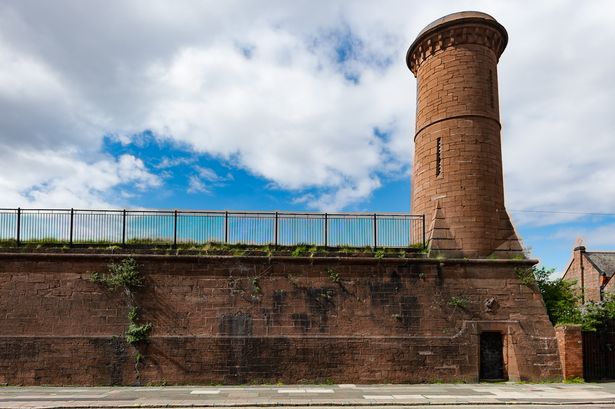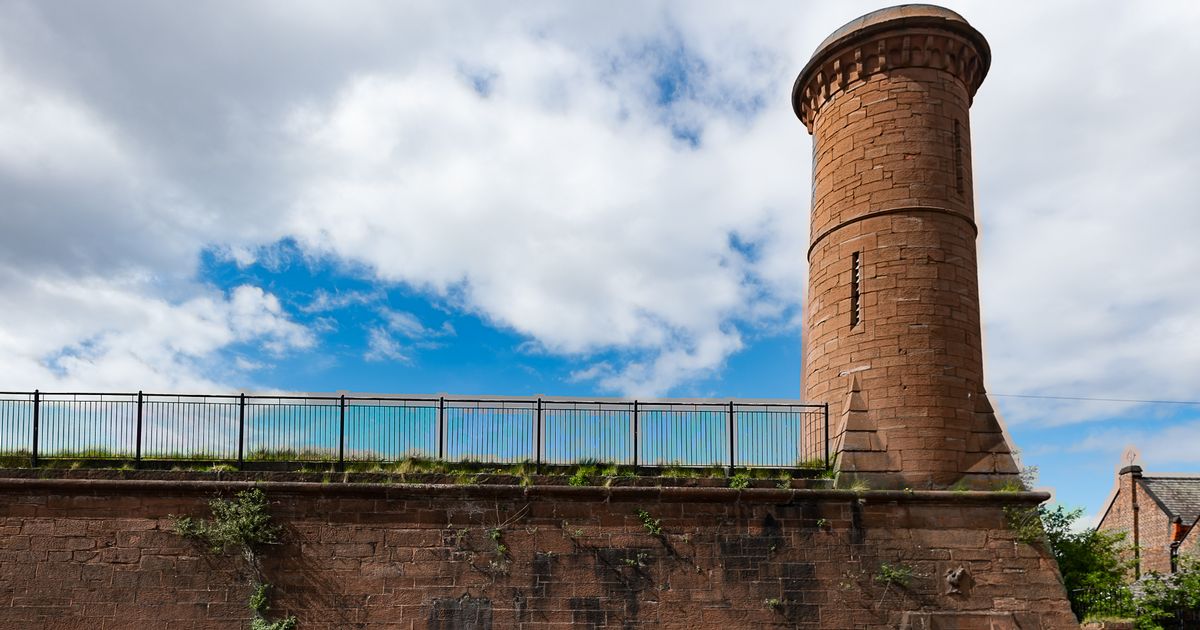The fortress-looking building helped Liverpool to thrive during the Victorian era Toxteth Reservoir on High Park Street(Image: Brian Roberts)
Toxteth Reservoir on High Park Street(Image: Brian Roberts)
From the outside, Toxteth Reservoir on High Park Street looks like a solid block of sandstone, a curious relic from Liverpool’s Victorian past. But step inside and you’ll find something remarkable – a vast cathedral of brick and iron that once kept the city alive.
Built by the Corporation of Liverpool in 1853, the reservoir was one of the city’s earliest major public health projects. As Liverpool’s population exploded during the mid-19th century – fuelled by Irish immigration after the potato famine – clean water became a matter of survival. Outbreaks of cholera were common, and policymakers realised that safe, reliable water was vital if the city was to thrive.
The reservoir could distribute water across the city under pressure – not only to homes and businesses but also to the nearby docks as it provided a head of water to fight fires.
Holding around 1.75 million gallons – about nine million litres – of water at a depth of 12 feet, it was a pioneering piece of infrastructure. The Victorian engineers who designed it couldn’t have known how long their creation would last, but Toxteth Reservoir remained in use for nearly 150 years before being closed in 1997.
The structure itself is stunning. Its outer walls, built from heavy sandstone blocks, give it the appearance of a fortress. The original entrance, at the base of the round tower on the south east corner, has an iron door surmounted by a sculptured Liver Bird – a proud symbol of civic pride.
Originally, the tower was topped by a small spire, but after it was struck by lightning in the 1960s, it was replaced by a Plexiglas dome.
Inside, though, is where the true magic lies. There’s an extraordinary hall supported by 96 cast-iron columns, each rising to meet a vaulted iron and brick ceiling. The space is dark, echoing and atmospheric – a hidden masterpiece of Victorian engineering.
 A view inside Toxteth reservoir, with its cast iron columns, brick arches and vaults(Image: Liverpool Echo)
A view inside Toxteth reservoir, with its cast iron columns, brick arches and vaults(Image: Liverpool Echo)
Despite being built purely for function, the attention to detail is remarkable. A series of iron valves and stone spillways still line the southern wall, while the brick floor and asphalt linings once kept the structure watertight.
After being decommissioned, the site was taken over by local social enterprise Dingle 2000 Development Trust, who secured a 125-year lease from United Utilities.
Since then, they’ve worked to breathe new life into the building – and in doing so, have helped preserve one of Liverpool’s great landmarks.
The reservoir has since become a magnet for artists, filmmakers and visitors. It’s opened to the public during National Heritage Week, with large crowds drawn to its stunning interior. It’s also served as a dramatic venue for the Liverpool Biennial, hosting laser light installations that attracted thousands.
Its cinematic atmosphere hasn’t gone unnoticed by TV and film crews either. The BBC has used it to shoot Florence Nightingale and scenes from Peaky Blinders, while ITV filmed parts of Grange Hill and even a children’s Dracula movie there. The space has become one of Liverpool’s most recognisable filming locations – even if few realise where those scenes were shot.
In 2018, as Liverpool marked ten years since becoming European Capital of Culture, the reservoir once again played a starring role. The Aurora project, run in partnership with local arts organisation FACT, turned the underground space into an immersive experience of light, sound and technology.
